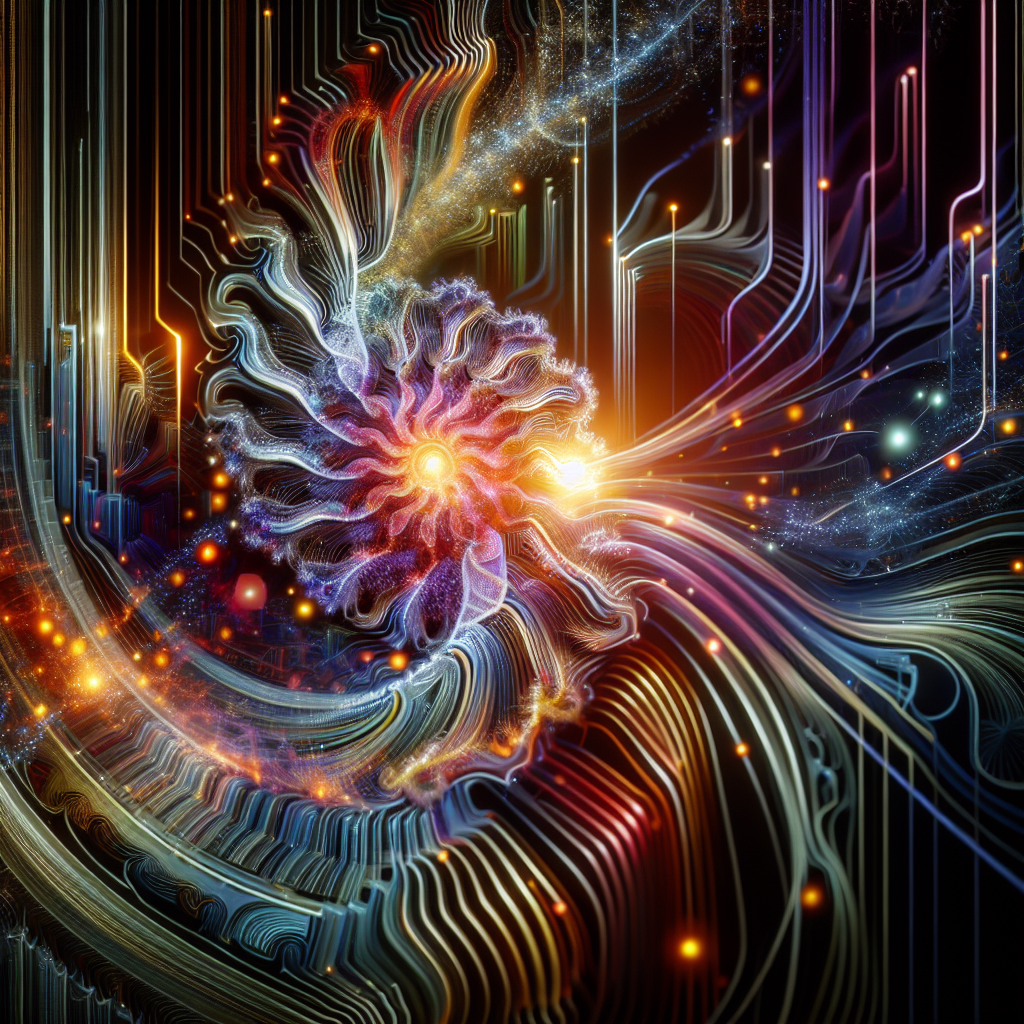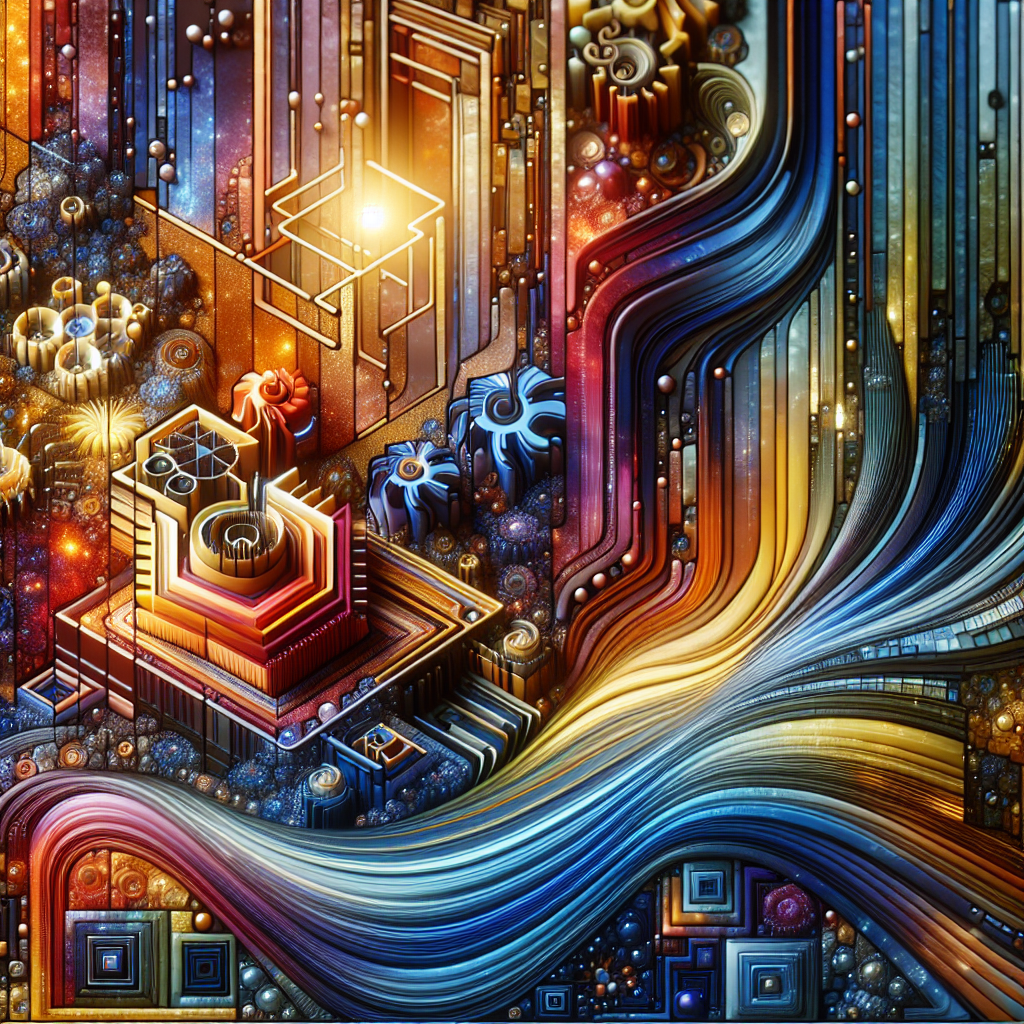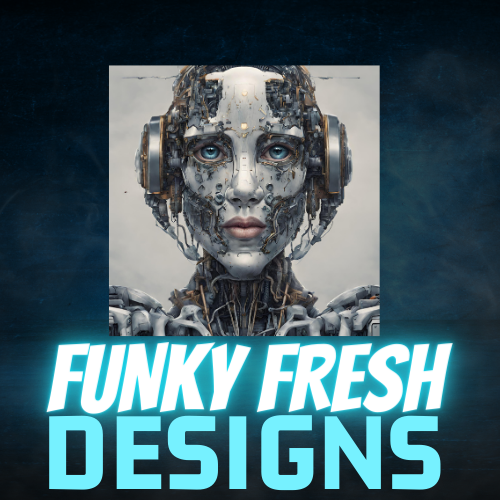New Design Techniques Powered By AI. In the fast-paced world of design, innovation is the name of the game. Traditional methods often fall short, leaving designers on a constant quest for new techniques that can push the boundaries of creativity. Enter artificial intelligence (AI), the revolutionary force that has taken the design industry by storm. With its ability to analyze vast amounts of data and generate unique ideas, AI is now empowering designers to unlock new possibilities like never before. In this article, discover the fascinating ways in which AI is fueling a new era of design, where imagination meets technology in the most creative and awe-inspiring ways.
1. Understanding AI-Powered Design
1.1 Introduction to AI-Powered Design
AI-Powered Design is revolutionizing the world of design, bringing new possibilities and transforming the creative process. Artificial Intelligence (AI) refers to the simulation of human intelligence in machines that can think, learn, and problem-solve. When integrated into the design process, AI enables designers to enhance their creativity, efficiency, and overall output. By utilizing AI technology, designers can unlock novel approaches, streamline their workflow, and create designs that are both aesthetically pleasing and functional.
1.2 Benefits of AI in Design
The integration of AI in the design industry brings numerous benefits for designers and organizations alike. One major advantage is the ability of AI to assist designers in generating new ideas and solutions. By leveraging AI algorithms and data analysis, designers can access vast amounts of information, trends, and inspiration, resulting in more innovative and original designs. Additionally, AI-powered design tools and software can automate various tasks, saving time and effort for designers. This increased efficiency allows designers to focus their energy on more creative and strategic aspects of their work. AI also enables designers to personalize their designs and target specific user groups by analyzing user data and preferences. This level of personalization enhances the user experience and ultimately leads to more satisfied customers.
1.3 How AI is Changing the Design Landscape
The introduction of AI-powered design has revolutionized the way designers approach their work. Instead of relying solely on traditional design techniques, designers now have access to powerful AI-driven tools that expand their creative capabilities. AI can generate design concepts, analyze user preferences, automate repetitive tasks, and even assist in decision-making. This technological advancement has transformed the design landscape, blurring the boundaries between human creativity and AI innovation. Designers are now able to push the boundaries of what is possible, experiment with new ideas, and create designs that were once unimaginable. AI is not replacing designers; rather, it is augmenting their skills, enabling them to reach new levels of creativity and productivity.
2. Applications of AI in Design
2.1 AI-Driven Generative Design
Generative design is a process that utilizes AI algorithms to create design options based on specified parameters. By inputting specific design constraints, such as materials, dimensions, and performance requirements, AI algorithms can generate a multitude of design options. This enables designers to explore different possibilities and find optimized solutions quickly. AI-driven generative design has the potential to revolutionize industries such as architecture, product design, and urban planning by creating innovative and efficient designs that meet specific criteria.
2.2 Automated Layout and Composition
Traditional layout and composition tasks in design can be time-consuming and require manual adjustment and fine-tuning. However, with the application of AI, designers can automate these processes and achieve more accurate and visually pleasing results. AI algorithms can analyze content, understand visual hierarchy, and apply design principles to automatically generate layout options. This streamlines the design process and allows designers to focus on refining the creative elements of their work.
2.3 Intelligent Image and Video Editing
AI-powered image and video editing tools have revolutionized the way designers manipulate and enhance visual content. By leveraging AI algorithms, designers can automatically enhance images, remove imperfections, and adjust colors and lighting. These tools also offer intelligent features such as object recognition, allowing designers to easily isolate and manipulate specific elements within an image. Similarly, AI-enabled video editing tools can automate tedious tasks like color grading and video stabilization, enabling designers to achieve professional-grade results with minimal effort.

3. AI Assistance for Designers
3.1 AI-Powered Design Suggestions
Designers often face challenges when it comes to generating new ideas and finding suitable design directions. AI-powered design suggestion tools offer valuable assistance by analyzing existing designs, user preferences, and design trends to provide suggestions and recommendations. By leveraging AI to assist in the ideation process, designers can overcome creative blocks, discover new design possibilities, and create designs that resonate with their target audience.
3.2 Smart Pattern Recognition
Pattern recognition is a fundamental aspect of design, and AI-powered tools have greatly enhanced this capability. AI algorithms can analyze vast amounts of visual data and identify patterns that may not be apparent to the human eye. This allows designers to uncover hidden connections, uncover design trends, and gain deeper insights into user preferences. By leveraging smart pattern recognition, designers can create designs that align with current aesthetics and user expectations.
3.3 Style Transfer for Design Inspiration
AI-powered style transfer tools enable designers to extract the visual style from one image or design and apply it to another. This technology finds applications in various design fields, such as graphic design and web design. By leveraging style transfer, designers can easily explore different visual styles, experiment with combinations, and gain inspiration from existing designs. This not only saves time but also encourages creativity and exploration, leading to more dynamic and visually engaging designs.
4. AI-Based Creative Tools
4.1 AI-Generated Mockups and Prototypes
Mockups and prototypes are essential tools in the design process, allowing designers to visualize their concepts and gather feedback. With the integration of AI, designers can now generate realistic mockups and interactive prototypes automatically. AI algorithms can analyze design elements and parameters to create virtual representations of products, interfaces, or spaces. This not only speeds up the design process but also provides clients and stakeholders with a more tangible understanding of the final design. AI-generated mockups and prototypes enable designers to present their ideas effectively, resulting in better collaboration and faster iterations.
4.2 AI-Enhanced Color Palettes and Typography
Color palettes and typography play a crucial role in the overall aesthetics and communicative power of a design. AI-powered tools can assist designers in selecting color schemes and fonts that best suit their design goals. By analyzing design content and user preferences, AI algorithms can generate color palettes that harmonize well and evoke desired emotions. Similarly, AI can suggest typography options that align with the design’s tone and purpose. These AI-based insights empower designers to make informed decisions and create visually impactful designs.
4.3 AI-Driven Logo Design
Logo design is a specialized field that requires careful consideration of brand identity, target audience, and visual elements. AI-powered logo design tools can automate the logo creation process, enabling designers to generate multiple logo options quickly. By analyzing brand attributes, industry trends, and user preferences, AI algorithms can suggest logo designs that align with brand values and resonate with the target audience. AI-driven logo design tools provide designers with a starting point and inspiration, which can then be further refined and personalized.

5. Improving User Experience with AI
5.1 Personalized Design Recommendations
User experience (UX) plays a significant role in how users interact with products, services, and digital platforms. AI can enhance UX by providing personalized design recommendations based on user behavior and preferences. By analyzing user data and interaction patterns, AI algorithms can suggest design elements, layouts, and features that optimize the user experience. Personalized design recommendations ensure that users feel engaged, understood, and connected with the design, leading to higher satisfaction and increased conversions.
5.2 AI-Enabled User Testing
User testing is a crucial step in the design process to evaluate the usability and effectiveness of a design. AI-enabled user testing tools automate this process by analyzing user interactions, collecting data, and generating insights. AI algorithms can identify usability issues, analyze user feedback, and provide designers with actionable recommendations for improvement. With AI-enabled user testing, designers can gather valuable insights more efficiently, iterate on their designs, and create designs that meet user needs effectively.
5.3 AI-Driven UX Analytics
Understanding user behavior and preferences is essential for creating effective design solutions. AI-driven UX analytics tools leverage machine learning algorithms to analyze user data and generate insights on user behavior, preferences, and engagement levels. By collecting and analyzing data from different channels and touchpoints, AI enables designers to make data-driven decisions and tailor designs to the specific needs and preferences of their target users. This level of insight empowers designers to create designs that resonate with users on a deeper level, resulting in more engaging and successful user experiences.
6. AI and Collaboration in Design
6.1 AI-Powered Design Collaboration
Design collaboration often involves multiple stakeholders, each contributing their expertise and ideas. AI-powered design collaboration tools facilitate effective communication and collaboration among team members. By enabling real-time feedback and version control, AI helps streamline the collaboration process, saving time and reducing miscommunication. These tools improve coordination and ensure that all team members are aligned, resulting in cohesive and unified design outputs.
6.2 Real-time Translation and Local Adaptation
In a globalized world, designers often need to consider different languages, cultures, and user preferences. AI-powered real-time translation and local adaptation tools enable designers to overcome language barriers and adapt designs to different cultural contexts. These tools can automatically translate text, adapt content layout, and adjust visuals to cater to specific regions and markets. Real-time translation and local adaptation enable designers to reach a broader audience and ensure their designs are culturally appropriate and engaging.
6.3 Collaborative AI Sketching
Sketching is an integral part of the design process, allowing designers to quickly explore ideas and concepts. AI-powered collaborative sketching tools take sketching to the next level by enabling multiple designers to work together on the same canvas simultaneously. These tools offer real-time feedback, suggestion, and modification features, enhancing the collaborative process and fostering creativity. Collaborative AI sketching empowers designers to collectively brainstorm, refine ideas, and explore new design directions in a dynamic and interactive manner.
7. Ethical Considerations in AI-Driven Design
7.1 Addressing Bias and Exclusivity
AI algorithms are trained on data, and if that data is biased or exclusive, it can lead to biased and exclusive design outcomes. Designers must be mindful of the ethical implications of AI-driven design and take proactive steps to address and mitigate bias. This involves ensuring diverse and representative data sets, questioning the assumptions of algorithms, and continuously evaluating and refining the AI models used in the design process. By actively addressing bias and exclusivity, designers can create inclusive and equitable experiences for all users.
7.2 Preserving Human Creativity
While AI-powered design tools offer tremendous capabilities, it is important to preserve and celebrate human creativity. Designers must remember that AI is a tool to enhance their craft, not replace it. Human creativity, intuition, and critical thinking are irreplaceable elements that contribute to truly innovative and meaningful designs. By embracing AI as a creative partner rather than relying on it solely, designers can maintain their unique style and perspective while leveraging AI’s capabilities to expand their creative boundaries.
7.3 Ensuring Transparency and Accountability
AI algorithms can be complex and opaque, making it challenging to understand their decision-making processes. Designers should prioritize transparency and accountability in AI-driven design by ensuring clear and understandable explanations of AI-generated design choices. By involving users and stakeholders in the decision-making process and providing mechanisms for feedback and oversight, designers can build trust and ensure that the AI-driven design outputs are not only aesthetically pleasing but also align with the values and expectations of the users.
8. Future Implications of AI in Design
8.1 Design Automation and Efficiency
The future of AI in design holds immense potential for automation and increased efficiency. As AI continues to advance, it will further automate repetitive design tasks, allowing designers to focus on more creative and strategic aspects. From generating design options to layout and composition, AI-powered tools will streamline the design process and reduce time and effort. Designers will be able to explore more design possibilities in less time and iterate more rapidly, leading to enhanced workflow efficiency and higher productivity.
8.2 Enhanced Design Accessibility
AI-driven design tools have the potential to enhance design accessibility and inclusivity. By analyzing user data and preferences, AI algorithms can generate personalized design recommendations that cater to individuals with varying needs and preferences. This inclusivity extends to individuals with different abilities, as AI can assist in creating designs that are accessible and usable for all. The future implications of AI in design hold promise in creating more accessible and inclusive design solutions that cater to diverse user groups.
8.3 AI as a Co-Creative Partner
As AI technology continues to advance, it is poised to become an integral part of the design process, serving as a co-creative partner to designers. AI algorithms will evolve to better understand human creativity, preferences, and intentions. This evolution will enable AI to generate design suggestions and recommendations that align with the designer’s vision rather than replacing it. By leveraging the combined strengths of AI and human creativity, designers will be able to push the boundaries of innovation and create designs that are both artistically beautiful and technically advanced.
9. Challenges and Limitations of AI in Design
9.1 Data Quality and Availability
The quality and availability of data present a significant challenge for AI-driven design. AI algorithms rely on vast amounts of data to learn and make accurate predictions. However, not all design organizations have access to comprehensive and diverse datasets. Limited or biased data can result in suboptimal outcomes and design solutions. Designers must ensure that the data used to train AI models is of high quality, representative, and inclusive to avoid biased results and limitations in design applications.
9.2 Balancing Automation and Human Touch
Finding the right balance between automation and the human touch is an ongoing challenge in AI-powered design. While automation can streamline the design process and increase efficiency, it may lead to designs that lack human creativity, intuition, and emotional connection. Designers must strike a balance where AI serves as a tool to enhance human creativity rather than replacing it entirely. By leveraging AI to automate repetitive and mundane tasks, designers can focus on the strategic and artistic aspects of their work, ensuring that the human touch remains at the core of the design process.
9.3 Ethical Concerns and User Acceptance
The deployment of AI in design raises ethical concerns and challenges that need to be carefully addressed. As AI algorithms influence design decisions, designers must ensure that the design outcomes are fair, inclusive, and respectful of user privacy. Additionally, user acceptance of AI-driven design is crucial for its successful implementation. Designers must educate users about the benefits and limitations of AI in design, ensuring transparency and user engagement throughout the design process. Overcoming ethical concerns and gaining user acceptance are essential steps in maximizing the potential of AI-driven design.
10. Conclusion New Design Techniques Powered By AI
AI-powered design is transforming the design landscape, offering new possibilities, enhanced creativity, and increased efficiency. From generative design and automated layout to personalized design recommendations and collaborative sketching, AI is revolutionizing the way designers approach their work. While AI offers immense benefits, it also presents challenges and limitations that need to be addressed proactively. By continuously striving for ethical design practices, preserving human creativity, and fostering user acceptance, designers can leverage the power of AI to create innovative, inclusive, and impactful designs. The future implications of AI in design hold promise for increased automation, enhanced accessibility, and a synergistic partnership between AI and human creativity. As AI continues to advance, designers must embrace this technological revolution and harness its potential to push the boundaries of what is possible in the world of design.
